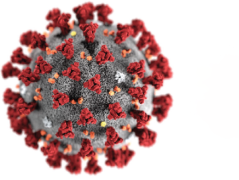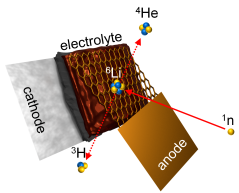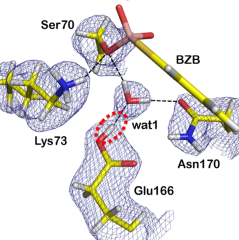MLZ is a cooperation between:
 > Technische Universität München
> Technische Universität München > Helmholtz-Zentrum Hereon
> Helmholtz-Zentrum Hereon
 > Forschungszentrum Jülich
> Forschungszentrum Jülich
MLZ is a member of:
 > LENS
> LENS > ERF-AISBL
> ERF-AISBL
MLZ on social media:

MLZ (eng)
Lichtenbergstr.1
85748 Garching
23.09.2020
District Administrator of Freising visits research neutron source
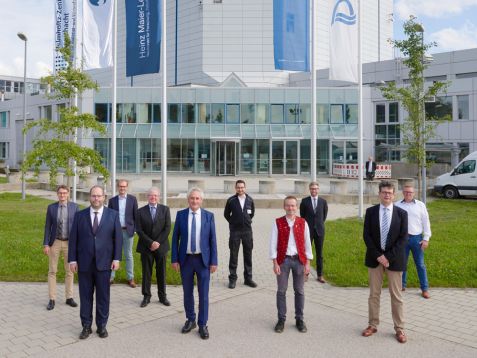
District Administrator Helmut Petz (front, 2nd from left), visited the FRM II with his staff members. The three directors of the research neutron source guided the visitors through the facility (front, from left): Robert Rieck, Dr. Axel Pichlmaier and Prof. Dr. Peter Müller-Buschbaum © W. Schürmann / TUM
The District Administrator of Freising, Helmut Petz, visited the research neutron source Heinz Maier-Leibnitz (FRM II) together with his department and subject area managers. The directors of the neutron source informed the interested visitors during a guided tour about the safety concepts, scientific projects and planned extensions of the research facility.
On invitation of the three directors of the research neutron source Heinz Maier-Leibnitz (FRM II) of the Technical University Munich, District Administrator Helmut Petz came to Garching. After introductory speeches by the Technical Director Dr. Axel Pichlmaier on the functioning and safety of the reactor and by Prof. Peter Müller-Buschbaum on the scientific use and application, District Administrator Petz visited the neutron source with five department and subject area managers from the Freising District Office.
Insight into research
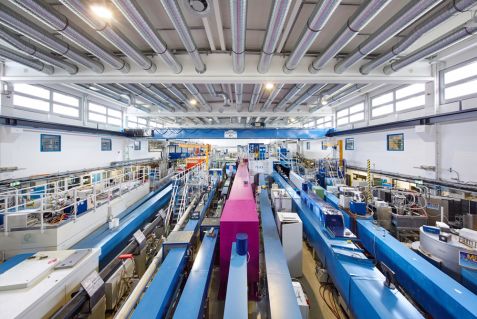
The neutron guide hall of FRM II, where for example research on antibiotic resistance is carried out at the instrument BioDiff. © Bernhard Ludewig, BioDiff
Looking into the reactor pool the visitors learned more about the safety concept of the neutron source from Technical Director Dr. Axel Pichlmaier. The three directors of FRM II guided the guests from Freising to the measuring instruments in the neutron guide hall. There the Scientific Director Prof. Dr. Peter Müller-Buschbaum explained current research projects and why science will continue to rely on powerful neutron sources like the FRM II in the future. As illustrative examples from research, he mentioned, among others, the understanding of antibiotic resistance, stresses in turbine blades and research on lithium batteries.
Every year, about 1,200 international scientists examine their samples in the neutron light at the Heinz Maier-Leibnitz Zentrum (MLZ), which is operated by the Technical University Munich, Forschungszentrum Jülich and Helmholtz Zentrum Geesthacht. Administrative Director Robert Rieck spoke about cooperations with research institutions and the planned expansions with new scientific instruments.
Special commitment during the corona pandemic
The visit was arranged by Manfred Danner, head of the Freising district fire brigade, who is full-time control shift supervisor and reactor operator at FRM II. At the beginning of the corona pandemic it was his idea to provide ultrapure water from FRM II for surface disinfectants. His supervisor, Axel Pichlmaier, praised: “Thanks to the great commitment of our employees, the FRM II supported the fire departments and the Technisches Hilfswerk (THW) in the Freising district during the times of corona”.
Facing the corona pandemic, the MLZ provides separate access to measurements with neutrons, which can provide important insights into the behaviour of the corona virus. Müller-Buschbaum explained: “Scientists who want to use neutrons to study the coronavirus SARS-CoV-2 or the disease COVID-19 will receive special and privileged access.”
Neutrons for cancer therapy
Müller-Buschbaum reported how the FRM II produces radioisotopes for nuclear medical applications, cancer therapy and cancer diagnostics. There were questions from the District Administrator about the planned irradiation facility for the radioisotope molybdenum-99/technetium-99m. Currently there is a supply shortage for the 30 million applications required annually worldwide, as only a few research reactors are still able to produce the extremely important radioisotope.
The irradiation facility for doping silicon for the semiconductor industry also aroused great interest. Pure silicon conducts electricity only very poorly. At FRM II up to 15 tons of silicon are doped per year, which corresponds to about ten percent of the world market. After doping with the help of neutrons, it is used, for example, for high-performance electronics required for long-range direct current transmission or in the automotive industry.
District Administrator impressed by fields of application
“Here we have one of the most modern large-scale research facilities on our doorstep and we have now been able to convince ourselves personally of its scientific excellence and safety. We are pleased about the good neighbourly relations to this site”, District Administrator Petz said after the guided tour through the research neutron source, which annually attracts up to 3000 interested visitors. “I am impressed how broad the range of research and application fields is here at the neutron source and what an important research center the ‘Garching Reactor’ represents for scientists and patients from all over the world. I am surprised that this unique research facility is not known to a much larger public”.
More information:
Related News
MLZ is a cooperation between:
 > Technische Universität München
> Technische Universität München > Helmholtz-Zentrum Hereon
> Helmholtz-Zentrum Hereon
 > Forschungszentrum Jülich
> Forschungszentrum Jülich
MLZ is a member of:
 > LENS
> LENS > ERF-AISBL
> ERF-AISBL
MLZ on social media:



